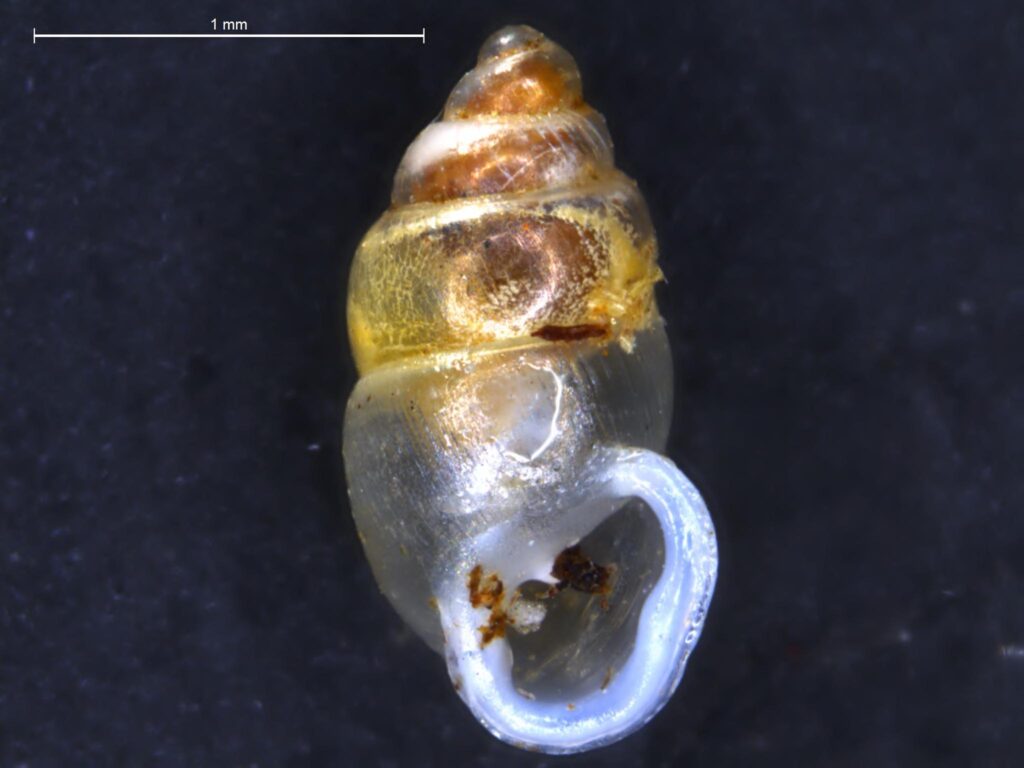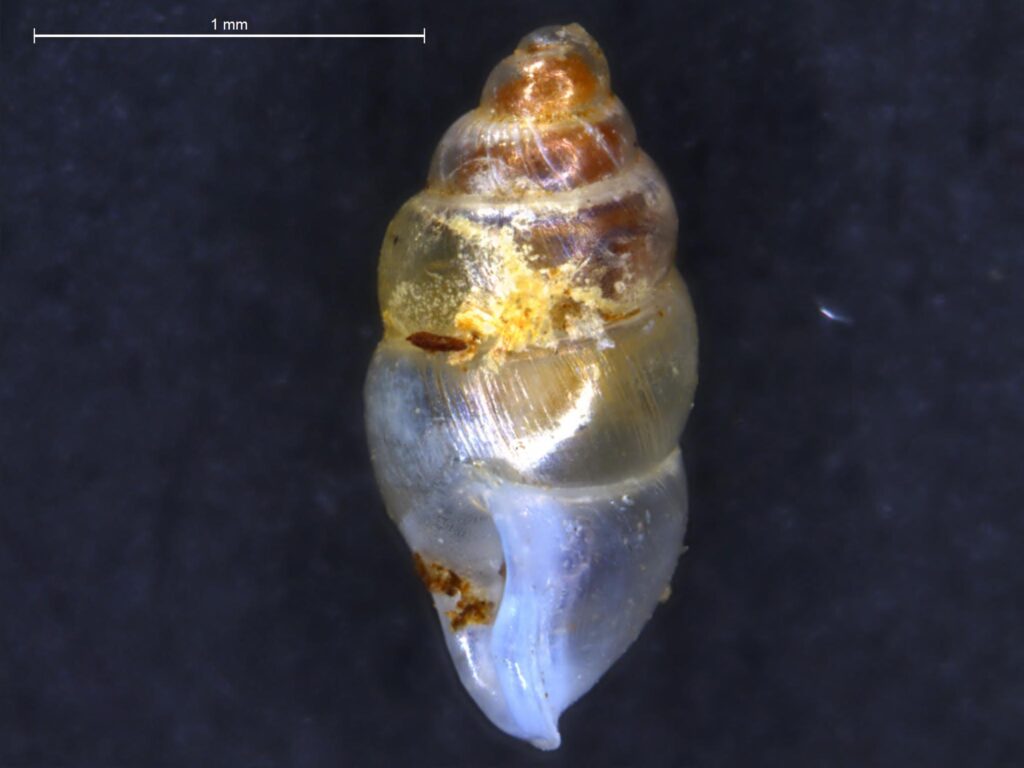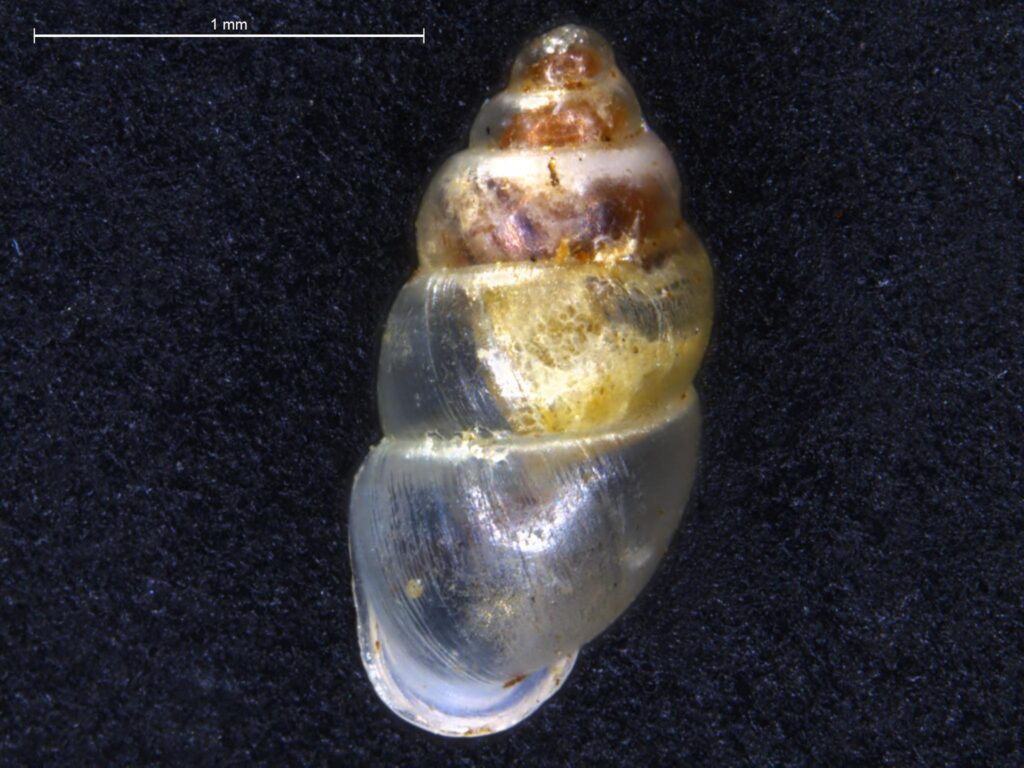


Image Usage Information
Family: Ellobiidae
Common name: Obese Thorn
Discovery: Say, 1822
Identification
Width: 0.75 mm
Height: 1.7 mm
Whorls: 4+
This animal’s shell is stouter than other Carychium, with a mainly smooth surface (Pilsbry, 1948). Some very faint striation may be seen on the final whorls. An important diagnostic characteristic is that the bulging body whorl of the shell breaks the plane of the aperture (Hubricht, 1963). The reflected aperture is oval-shaped, with a sinuous outer lip, and thickened within on the lower portion. On the parietal wall is a lamella which continues further into the shell. The aperture is one-third the height of the shell.
Ecology
This snail prefers damp, more calcium-rich environments, and may sometimes be found with C. exile (Hubricht, 1985). In the north of its range it is reported from wetland sites (Nekola, 2008).
Taxonomy
Carychium exiguum has also been known as Carychium euphaeum, C. existelium, C. perexiguum, and Pupa exigua.
Distribution
Carychium exiguum is found scattered through the Eastern and Midwestern United States and Canadian provinces, reaching as far south and west as Colorado, and as far north as New Brunswick. Its occurrence is very patchy in Virginia and other Appalachian states.
Conservation
NatureServe Global Rank: G3, Vulnerable.
